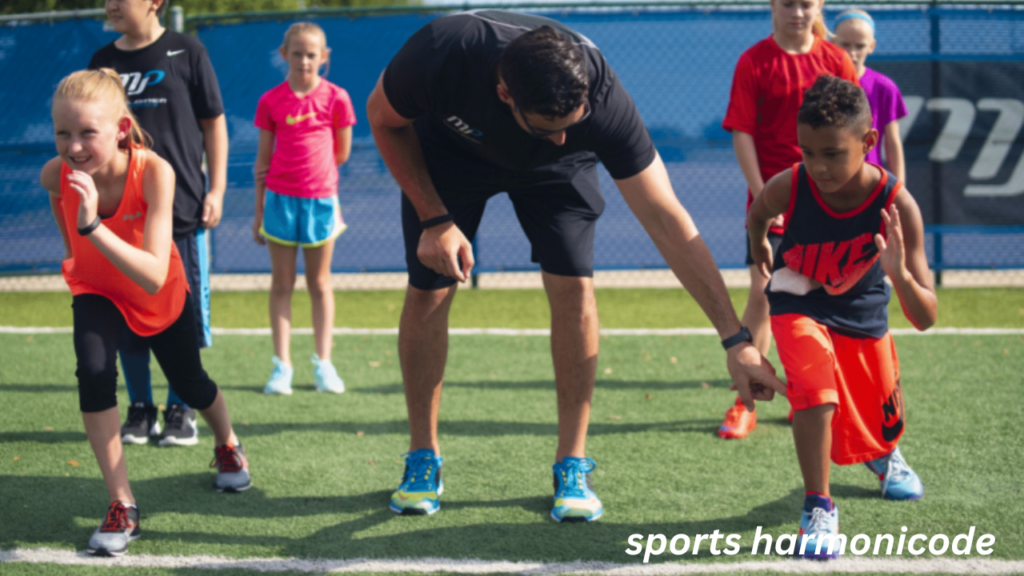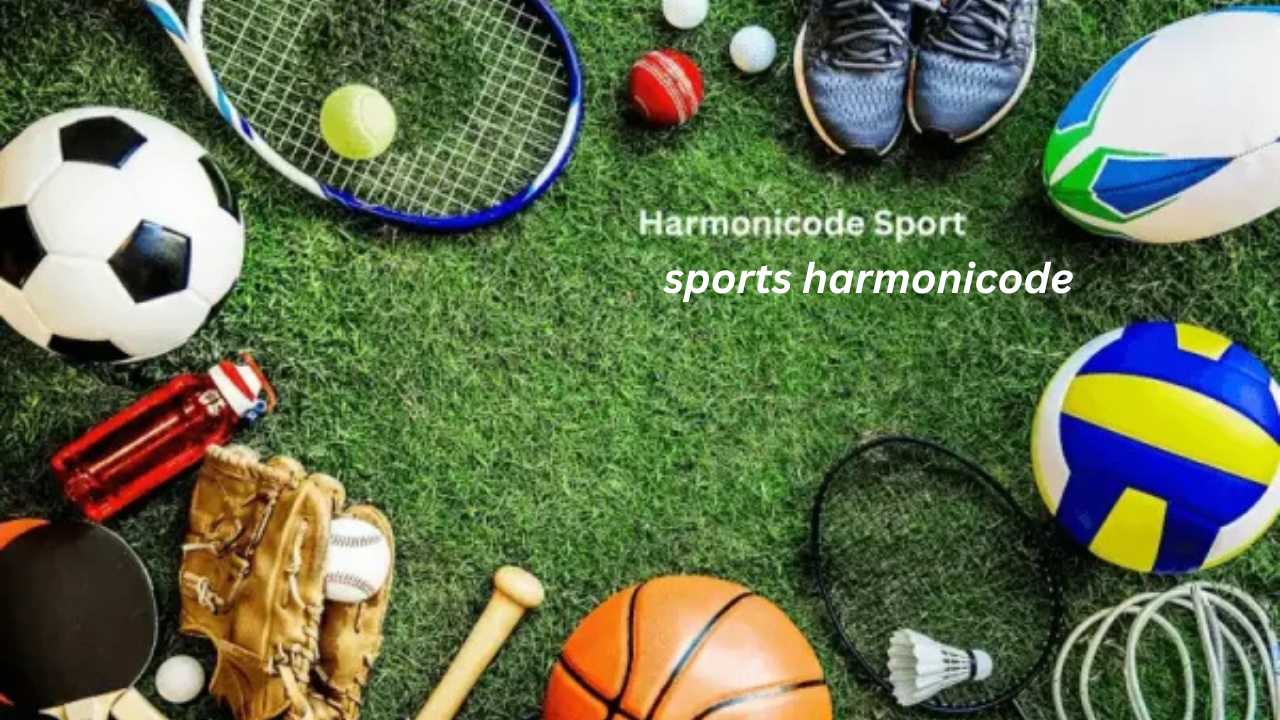In an era where technology is revolutionizing every aspect of our lives, the world of sports is undergoing a seismic shift. From smart wearables to AI-driven performance analysis, athletes and teams are exploring every edge to gain a competitive advantage. Amidst this innovation lies a concept both futuristic and deeply rooted in science: Sports Harmonicode. This advanced analytical approach decodes rhythmic and harmonic patterns in athletic performance, revealing insights that were once invisible to the naked eye.
The term may sound abstract, yet it’s emerging as a game-changer in sports science. Imagine understanding an athlete’s motion not just as a mechanical repetition but as a complex, data-driven symphony of frequencies and patterns. This is where harmonicode shines—by transforming raw movement into readable, actionable information.
As we dive deeper into the principles and applications of sports harmonicode, this article will unpack its origins, methodologies, tools, and real-world benefits. Whether you’re a coach, athlete, analyst, or sports enthusiast, understanding this cutting-edge field can reshape the way you view human performance and strategy.
What is Sports Harmonicode?

Origin and Etymology
The word “Harmonicode” blends two domains: “harmonic,” from music and physics, denoting balance and rhythm, and “code,” implying data-driven analysis. At its core, the concept draws inspiration from musical harmony and wave theory, applying those same principles to human motion and athletic performance. While it may seem novel, its roots stretch across decades of research in biomechanics, physics, and computational modeling.
Researchers began experimenting with harmonic analysis in the mid-20th century, especially in domains like aerospace and robotics. Only recently has this analytical framework found its way into sports, thanks to advances in computing power and sensor technology. With the rise of AI and motion capture, it’s now possible to analyze the frequencies, amplitudes, and patterns of motion in real-time—paving the way for sports harmonicode to take center stage.
Defining Sports Harmonicode
Sports Harmonicode refers to the systematic study of harmonic motion in athletic performance, using data analysis to identify patterns and rhythms. Just like a musician tunes their instrument to produce perfect harmony, coaches and analysts can now “tune” an athlete’s body to achieve optimal efficiency and coordination.
This system works by capturing movement data, analyzing it for cyclical patterns, and interpreting the information to identify inefficiencies, asymmetries, or high-performance signatures. Each athlete essentially has a unique “harmonic fingerprint”—a signature rhythm of movement that defines their performance style. By decoding this fingerprint, trainers can tailor exercises, optimize recovery, and push athletes toward peak performance.
Interdisciplinary Nature
What makes Sports Harmonicode so compelling is its deeply interdisciplinary nature. It lies at the intersection of sports science, mathematics, artificial intelligence, biomechanics, and even music theory. Biomechanics helps understand the physicality behind motion, while AI and machine learning interpret patterns at a scale beyond human capability. Simultaneously, mathematical tools like Fourier transforms and wavelet analysis help decipher complex movements into understandable data streams.
This convergence makes harmonicode not just a scientific tool but an artful blend of logic and intuition—mirroring the very nature of sport itself.
How Sports Harmonicode Works
Fundamental Principles
The underlying principle of sports harmonicode is that all motion has a rhythm. Whether it’s a sprinter’s stride, a tennis player’s serve, or a basketball shot, each movement has a wave-like pattern. These patterns are governed by laws of motion, frequency, and amplitude. By analyzing this data, analysts can detect deviations that signal fatigue, inefficiency, or potential injury.
For example, a runner may maintain a cadence of 180 steps per minute. If harmonic analysis reveals fluctuating amplitudes or irregularities in stride timing, it might indicate early signs of muscular fatigue or imbalance. This type of granular insight isn’t possible through visual observation alone but becomes obvious through harmonic modeling.
Tools and Technologies Used
The rise of sports harmonicode is closely tied to the evolution of sensor technology and computing power. Tools such as inertial measurement units (IMUs), force plates, and motion-capture cameras are essential for collecting high-quality movement data. This raw data is then processed through machine learning algorithms that map out an athlete’s harmonic patterns in visual graphs or 3D models.
Additionally, wearable tech—like smart insoles and sensor-equipped clothing—provides continuous, real-time feedback. Analysts then use software platforms to interpret the harmonic data and generate actionable insights. These insights can be used for training, in-game strategy, and even post-game analysis.
The Coding Process
Creating a harmonicode begins with data collection during practice or gameplay. Each motion cycle is broken down into frames, with the software capturing time-based metrics. Through signal processing techniques like Fourier transforms, this data is translated into frequency-based waveforms.
These waveforms create a “harmonic signature,” which can be analyzed to compare movements over time or against other athletes. This entire process allows coaches to see not just what the athlete is doing, but how well they are doing it—and whether their movement is trending toward efficiency or dysfunction.
Applications of Sports Harmonicode
Performance Optimization
One of the most impactful uses of harmonicode is in enhancing athletic performance. By identifying ideal motion patterns, athletes can train to replicate them consistently, resulting in greater efficiency and speed. The feedback loop also allows for near-instantaneous adjustments, helping refine technique with surgical precision.
Moreover, training programs become more personalized. Instead of generalized routines, athletes receive drills tailored to correct specific inefficiencies in their unique harmonic code. This individualized approach fosters faster growth, better results, and more sustainable progress.
Injury Prevention and Recovery
Another powerful application lies in injury prevention and rehabilitation. Often, injuries occur due to overuse or imbalanced motion. Harmonic analysis can detect these subtle inconsistencies before they lead to major problems. For instance, a pitcher whose throwing mechanics deviate from their baseline harmonic pattern may be flagged for further evaluation.
In recovery settings, harmonicode helps monitor whether an athlete is regaining their pre-injury form. It offers measurable benchmarks for physical therapists and coaches, making the rehab process both more efficient and more precise.
Talent Identification and Scouting
In the realm of talent scouting, harmonicode offers a data-driven lens to identify athletes with optimal biomechanics. Instead of relying purely on visual performance, scouts can analyze movement signatures to spot emerging talent with high athletic potential.
It also allows comparisons between young athletes and elite performers, helping coaches identify which young players are naturally aligned with high-performance harmonic patterns.
Team Strategy and Game Tactics
Harmonicode also plays a role in strategic planning and team dynamics. By mapping collective player movements, analysts can identify team rhythms, synchronization, and spacing dynamics. Coaches can then adjust tactics based on how well players’ harmonic profiles align or clash.
Additionally, it aids in opponent analysis. Understanding the harmonic code of key opposing players allows teams to predict movement tendencies and create counter-strategies.
Real-World Case Studies and Examples
Sports Using Harmonicode Principles
A growing number of sports are integrating harmonicode principles into their training. In baseball, pitchers and hitters use harmonic feedback to fine-tune mechanics. In soccer, tracking player movement reveals spacing and coordination metrics. Basketball coaches use it to improve shooting consistency, and tennis players analyze serve rhythm for maximum efficiency.
Success Stories
Several elite athletes and teams have adopted harmonic-based systems with remarkable results. Case studies have shown a significant reduction in injury rates and improvements in performance when training is aligned with harmonic insights. Partnerships between sports franchises and tech companies have further accelerated its adoption.
Limitations and Challenges
Despite its benefits, there are challenges. High costs and technical complexity can limit access. There’s also a learning curve in interpreting harmonic data accurately. Some coaches may be resistant, preferring traditional methods. However, as technology becomes more accessible, these barriers are gradually being overcome.
Conclusion
Sports Harmonicode represents a profound shift in how we analyze and improve athletic performance. By merging rhythm, science, and data, it offers a new frontier in sports analytics—one where every movement tells a story, and every pattern has a purpose. As this field evolves, it holds the promise of not only enhancing elite performance but also democratizing access to precision training across all levels of sport.
FAQs
Is Sports Harmonicode only used in professional sports?
No, while it started in elite settings, harmonicode tools are increasingly being adapted for youth and amateur sports.
Can amateur athletes benefit from harmonic analysis?
Absolutely. It helps build foundational efficiency and prevent injury early in an athlete’s development.
How does Sports Harmonicode differ from traditional sports analytics?
Traditional analytics focus on outcomes (e.g., speed, score), whereas harmonicode examines how those outcomes are produced biomechanically.
What kind of data is required to create a harmonic profile?
Movement data collected via wearables, motion capture systems, and biomechanical sensors.
Are there privacy concerns with collecting athlete movement data?
Yes, especially regarding data ownership and usage. Ethical practices and athlete consent are crucial.
You May Also Read: https://topbuzusa.com/about-thriftyeventsnet/





